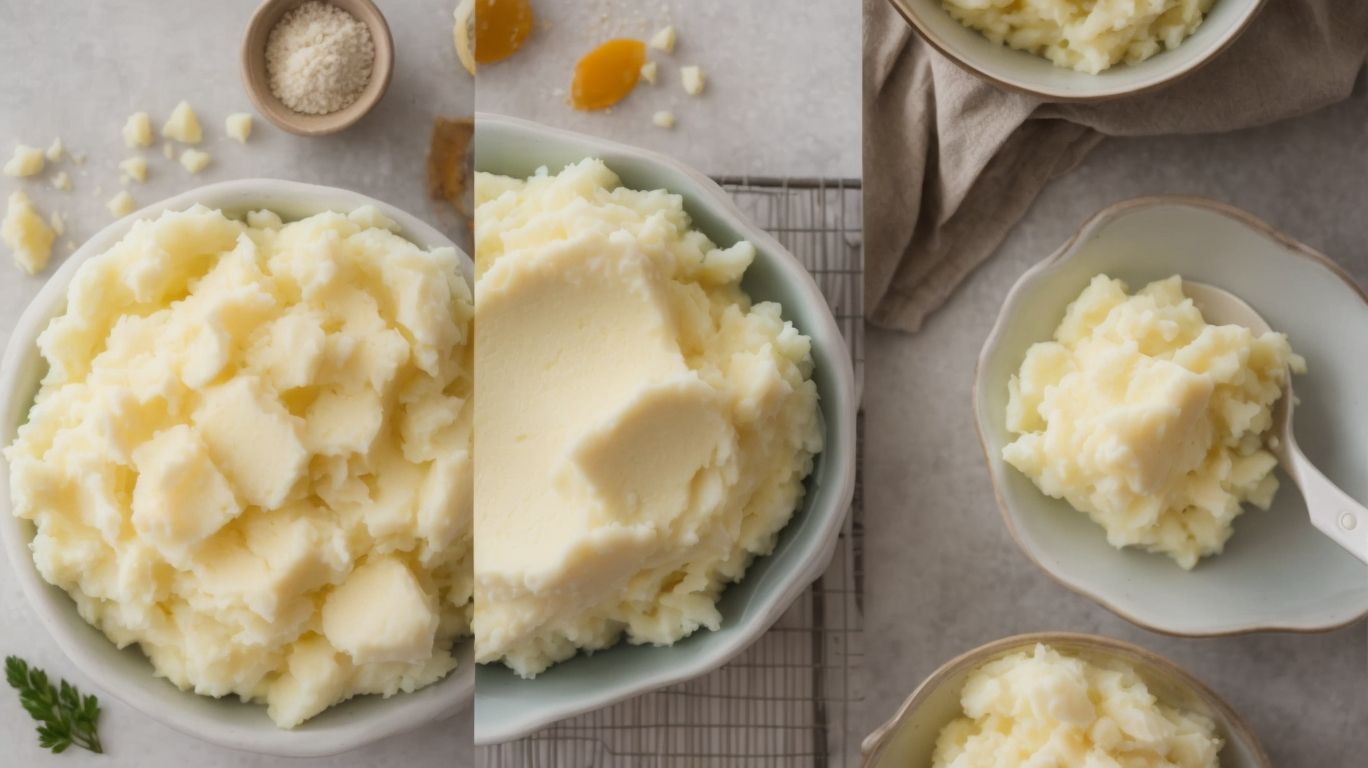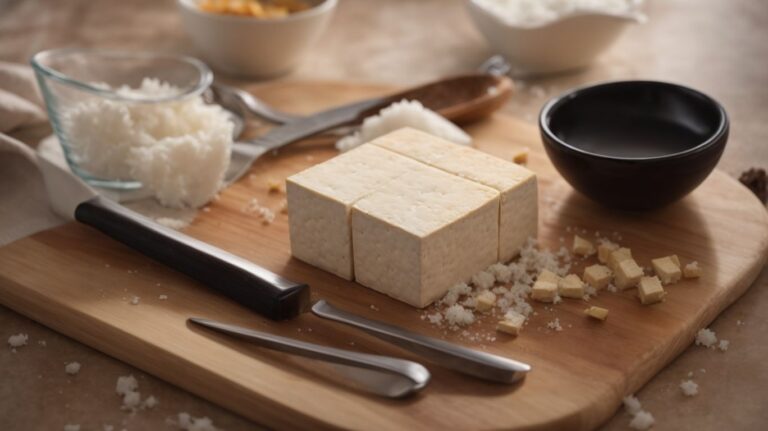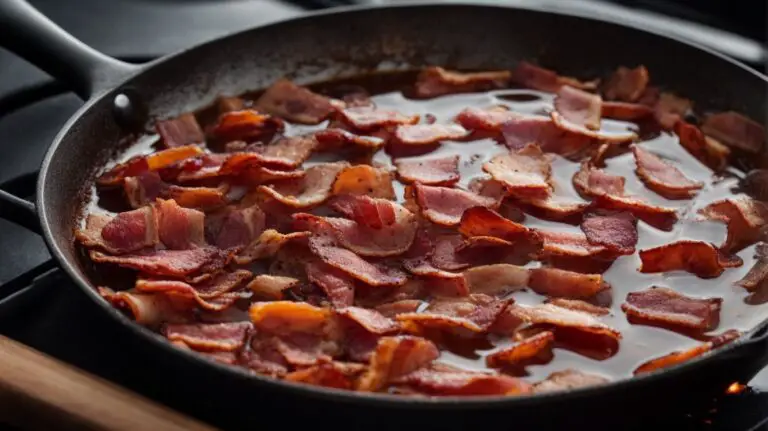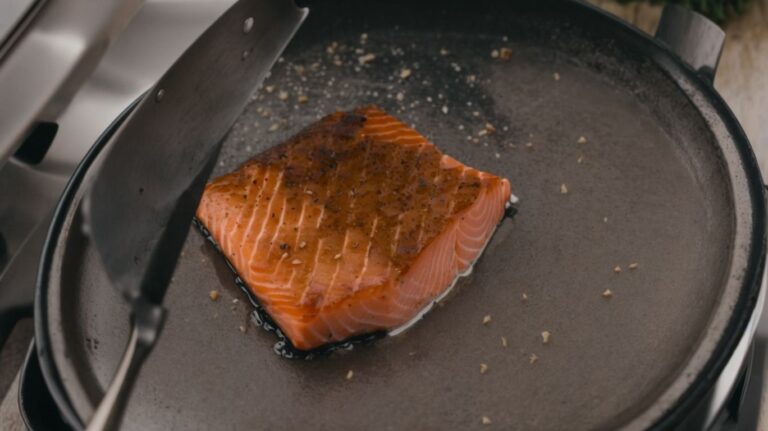How to Cook Mashed Potatoes?
Mashed potatoes are a beloved dish that can be found on dinner tables around the world. But have you ever wondered why they are so popular?
In this article, we will explore the versatility, comfort factor, and ease of making mashed potatoes. We will also discuss the best potatoes for mashing and how to prepare them properly.
Whether you prefer creamy or fluffy mashed potatoes, we have tips and tricks to help you achieve the perfect dish. Stay tuned for delicious recipes and expert advice from award-winning culinary blogger, Chris Poormet.
Key Takeaways:
1. Mashed potatoes are popular because they are versatile, comforting, and easy to make.
2. The best potatoes for mashing are Russet, Yukon Gold, and Red.
3. To make creamy and fluffy mashed potatoes, use a potato masher, ricer, or food processor and add butter, cream, and whip the potatoes.
Why Are Mashed Potatoes So Popular?
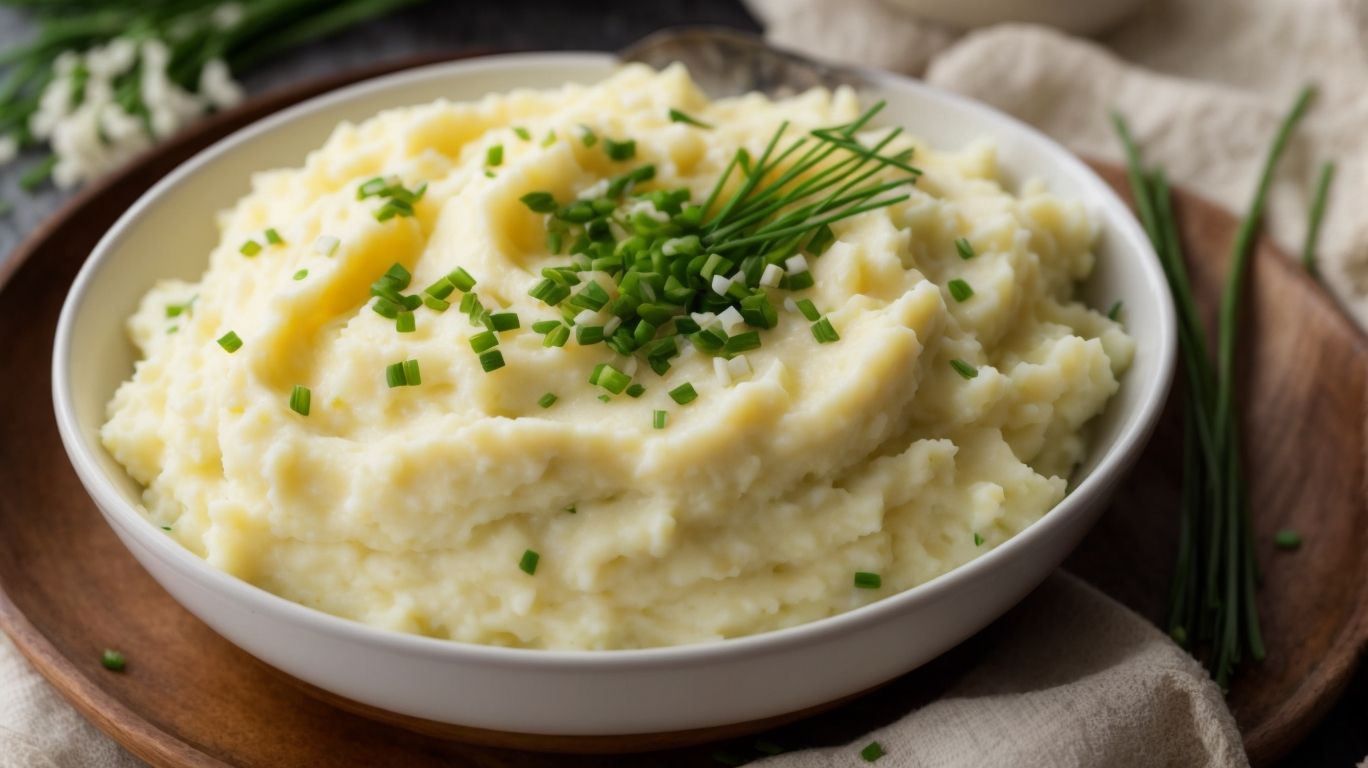
Credits: Poormet.Com – Edward Campbell
Mashed potatoes are a beloved dish known for their creamy texture and buttery flavor, making them a classic comfort food in many cuisines.
Versatile and adaptable, mashed potatoes pair well with a wide array of dishes, from hearty roasts to delicate seafood. These potatoes not only serve as a delicious side but also act as a comforting base for various recipes such as shepherd’s pie, potato croquettes, or even potato pancakes.
Achieving the perfect mashed potato consistency involves choosing the right variety of potatoes, like Russets or Yukon Golds, and cooking them until fork-tender before mashing them with warm milk, butter, salt, and pepper. This process ensures a luscious, lump-free texture that is both satisfying and homely.
Versatility in Recipes
Mashed potatoes showcase their versatility in recipes, serving as a blank canvas for various flavor profiles and ingredient combinations.
Whether you’re looking for a classic creamy side dish or a creative twist, mashed potatoes can deliver on both fronts. For a traditional approach, combining butter, milk, and a pinch of salt can result in a smooth and buttery mash. Mashed potatoes can also be enhanced with the addition of garlic, herbs, or even cheese for a more robust flavor profile.
Experimenting with different potato varieties like Yukon Gold or Russets can alter the texture and taste of the dish. Incorporating sour cream or cream cheese can add a tangy richness to the mashed potatoes. The key to achieving the perfect mashed potato consistency lies in the stirring – whether you prefer a rustic chunkiness or a velvety smoothness, the technique can make all the difference in the final dish.
Comfort Food Factor
The comfort food factor of mashed potatoes lies in their creamy consistency, buttery richness, and the ability to provide a sense of warmth and satisfaction with every bite.
When preparing mashed potatoes, achieving that creamy texture is crucial. Starting with the right type of potato, like Yukon Gold or Russet, can make a significant difference. Boil the potatoes until fork-tender, then mash them using a ricer or masher for a smooth consistency. Incorporating warm milk or cream slowly while mixing helps create a velvety finish.
To enhance the comfort food experience, consider adding roasted garlic or caramelized onions for depth of flavor. For a decadent twist, mix in cream cheese or sour cream. Don’t forget the seasoning – salt, pepper, and a touch of nutmeg can elevate the taste to new levels.
Easy to Make
Making mashed potatoes is a straightforward process that involves basic steps such as boiling the potatoes, mashing them, and adding the desired ingredients for flavor and consistency.
One essential tip for perfect mashed potatoes is to pick the right type of potato – Russet or Yukon Gold work best for their starchy content, resulting in a fluffy texture. Start by peeling and cutting the potatoes into uniform chunks to ensure even cooking. Boiling the potatoes with salted water enhances the flavor profile. Once the potatoes are fork-tender, drain them and return them to the pot to dry out any excess moisture before mashing. Experiment with different ingredients like butter, milk, sour cream, garlic, or herbs to create variations in taste and texture.
What Are the Best Potatoes for Mashing?
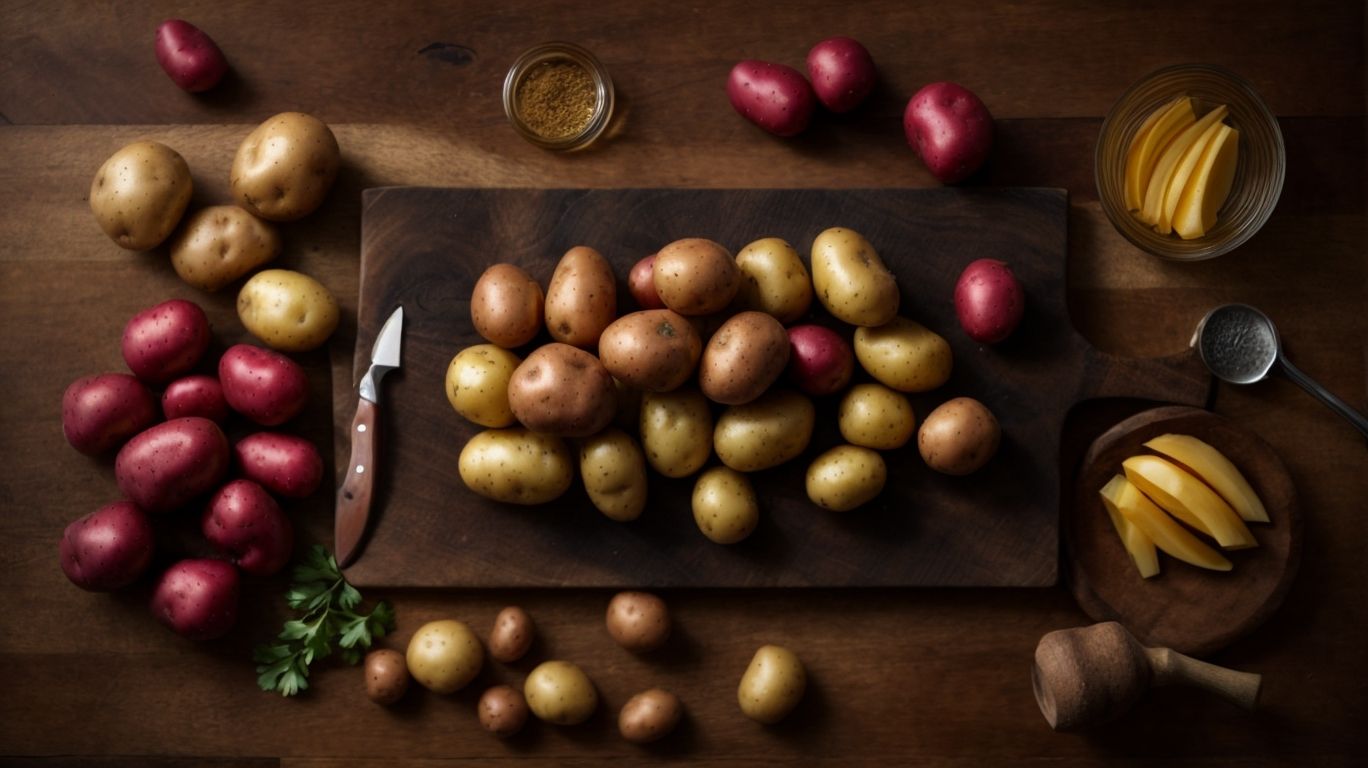
Credits: Poormet.Com – Gabriel Wilson
Selecting the best potatoes for mashing is crucial to achieving that perfect consistency and flavor for your holiday meals. Potatoes like Russet, Yukon Gold, and Red varieties are excellent choices due to their medium-high starch content.
Each type of potato brings a unique element to your dish. Russet potatoes, with their high starch content, are ideal for creating fluffy and light mashed potatoes, perfect for pairing with a savory gravy or a decadent cream sauce. On the other hand, Yukon Gold potatoes, with their rich buttery flavor and slightly lower starch content, result in a creamier texture that is well-suited for more indulgent occasions such as Thanksgiving or Christmas dinners.
- For a pop of color and added texture, the Red potatoes, with their medium starch content, maintain a firmer consistency when mashed, making them an interesting choice for those who prefer a chunkier mash.
- Ultimately, the key to achieving the perfect mashed potatoes lies in understanding the different varieties of potatoes and how their starch content influences the final product. Whether you seek a fluffy, creamy, or chunky texture, selecting the right potato will be the foundation of a memorable holiday side dish.
Russet Potatoes
Russet potatoes are renowned for their high starch content, making them an ideal choice for fluffy and light mashed potatoes with a creamy texture.
Regarding mashing, the high starch content in Russet potatoes plays a crucial role. The starch in these potatoes absorbs liquid and swells when cooked, creating that sought-after fluffy consistency in mashed potatoes. To ensure the best results, peeling the Russet potatoes is recommended before boiling them to achieve a smooth and velvety texture. For extra flavor, consider simmering the potatoes in milk instead of water. Be cautious not to overmix or overwork the potatoes to avoid a gluey consistency but rather gently fold in the seasonings and dairy ingredients for a perfect mash.
Yukon Gold Potatoes
Yukon Gold potatoes are prized for their buttery flavor and natural creaminess, making them a popular choice for rich and flavorful mashed potatoes.
It’s the unique waxy texture of these potatoes that sets them apart – they hold together well when cooked, ideal for mashing without turning gluey. Their thin skin adds a lovely earthy flavor while contributing a hint of texture to the creamy mash.
To achieve the best results, start by cutting the potatoes into uniform chunks, ensuring even cooking. Boil them in salted water until fork-tender, then drain well before mashing to maintain that luscious, velvety consistency. Delicious additions like warm butter, garlic, or fresh herbs can further elevate the dish, creating a comforting, indulgent side that everyone will love.”
Red Potatoes
Red potatoes offer a creamy and buttery texture when mashed, adding a vibrant hue and a slightly waxy consistency that complements various dishes.
Their thin skin, which is high in nutrients, can often be left on for added flavor and texture. When cooked, these potatoes hold their shape well, making them ideal for mashing while still retaining a bit of firmness. The natural sweetness of red potatoes pairs beautifully with garlic, herbs, and dairy products, enhancing the overall richness of mashed potatoes. By boiling them until tender and then mashing them with a touch of butter and cream, you can create a velvety-smooth and indulgent side dish that is sure to be a hit at any meal.
How to Prepare Potatoes for Mashing?
Preparing potatoes for mashing involves decisions like whether to peel the skin, cutting them into even pieces, and choosing between boiling or steaming methods for optimal texture and flavor.
Peeling the potatoes can result in a smoother consistency, as leaving the skins on can add a rustic texture and extra nutrients. When cutting the potatoes, ensure they are of similar sizes to ensure even cooking. Boiling the potatoes in salted water can infuse more flavor, while steaming retains more nutrients. For a richer taste, some chefs recommend boiling the potatoes with herbs or garlic. Ultimately, the preparation techniques you choose depend on your desired mashed potato texture and flavor profile.
Peel or Leave the Skin On?
Deciding whether to peel the skin of the potatoes or leave it on is a personal choice that can affect the texture and appearance of the mashed potatoes. Ensuring the potatoes are cut into even pieces helps in achieving uniform cooking and mashing.
Leaving the skin on potatoes can add a rustic flair to the dish and provide extra nutrients and fiber. Some prefer the smooth consistency of peeled potatoes, leading to a debate among home cooks and chefs alike.
The skin-on method can create a more colorful presentation and a slightly earthier taste. On the other hand, peeled potatoes tend to result in a creamier texture. Regardless of your choice, the key lies in the potatoes’ evenness of size to ensure they cook uniformly and can be easily mashed to the desired consistency.
Cut into Even Pieces
Cutting the potatoes into even pieces is essential to ensure uniform cooking and mashing, whether you choose to boil or steam them for your mashed potato recipe.
When potatoes are cut into equal-sized pieces, it allows for consistent cooking throughout, preventing some pieces from being undercooked while others are overdone. This uniformity not only impacts the overall texture of your mashed potatoes but also influences the cooking time.
Consistently-sized potato pieces will cook at the same rate, ensuring that all pieces are soft and ready to be mashed simultaneously. This also helps in creating a smooth and creamy mashed potato consistency with fewer lumps.
Boil or Steam?
Deciding whether to boil or steam the potatoes before mashing depends on personal preference and desired outcomes.
Both methods can yield excellent results, with boiling offering a softer texture and steaming providing a firmer consistency.
When boiling potatoes, they absorb more water, which can lead to a creamier result, ideal for those who prefer smoother mashed potatoes with a silkier mouthfeel.
On the other hand, steaming helps retain more of the potato’s natural flavor and nutrients, making it a healthier option. The firmer texture achieved through steaming is perfect for those who enjoy a chunkier, rustic mashed potato dish with a bit more bite.
How to Make Creamy Mashed Potatoes?
Creating creamy mashed potatoes involves incorporating the right balance of butter, cream, or milk to achieve a rich and velvety texture that enhances the overall flavor profile of the dish.
Butter, with its rich flavor and creamy consistency, plays a crucial role in adding depth to the mashed potatoes. It not only contributes to the luxurious mouthfeel but also helps bind the ingredients together.
On the other hand, cream or milk brings a smooth and silky texture to the dish, ensuring it is not too thick or too thin. When combined with just the right amount of each component, you can strike the perfect equilibrium between richness and lightness in your mashed potatoes.
Using a Potato Masher
Utilizing a potato masher is a traditional and effective method for making creamy mashed potatoes, allowing you to control the texture and consistency to achieve the perfect balance of creaminess and fluffiness.
When using a potato masher, it’s essential to start by cooking your potatoes until they are fork-tender but not overcooked, as this can lead to a gummy texture. Once the potatoes are ready, drain them thoroughly to remove excess moisture. Begin mashing them with the potato masher in a gentle, even motion, avoiding over-mixing which can result in a gluey consistency. Add warm milk or cream gradually while mashing to reach the desired creaminess, being mindful not to make the potatoes too thin.
Using a Potato Ricer
A potato ricer offers a unique way to make creamy mashed potatoes by ensuring a smooth and lump-free texture, resulting in a velvety consistency that enhances the overall dining experience.
One of the key advantages of using a potato ricer is its ability to effortlessly transform boiled potatoes into a uniform texture without any lumps or chunks. This is crucial for creating mashed potatoes that are luxurious in both taste and appearance. The ricer effectively presses the cooked potatoes through small holes, breaking them down into fine, delicate pieces that blend seamlessly when mixed with butter and cream.
Using a Food Processor
Employing a food processor can streamline the process of making creamy mashed potatoes, ensuring a uniform texture and incorporating the butter and cream/milk evenly for a decadent and satisfying outcome.
When using a food processor, the blades swiftly break down the boiled potatoes, resulting in a smoother consistency compared to manual mashing. This mechanical action helps avoid overworking the potatoes, preventing a gluey texture that can often occur when mashed by hand.
The food processor effortlessly blends the ingredients, ensuring that the butter or cream/milk is distributed evenly throughout the mashed potatoes. This even distribution enhances the overall flavor profile, resulting in a rich and luxurious taste with every bite.
How to Make Fluffy Mashed Potatoes?
Achieving fluffy mashed potatoes involves incorporating butter and cream while using techniques like whipping and the assistance of a hand mixer to create a light and airy texture that delights the palate.
Butter and cream play integral roles in making mashed potatoes soft and rich. The butter adds a velvety richness, while the cream contributes to a silky smooth texture. When combining these ingredients, make sure the butter is at room temperature to blend seamlessly.
Whipping the potatoes involves incorporating air into the mixture, resulting in a light and fluffy consistency. Using a hand mixer instead of a potato masher can yield even smoother and more airy mashed potatoes, ensuring a delightful dining experience.
Add Butter and Cream
Incorporating a generous amount of butter and cream, along with a splash of warm milk, is essential for creating fluffy mashed potatoes with a rich and luxurious texture that melts in your mouth.
Butter plays a crucial role in adding a velvety richness to the mashed potatoes while cream brings a smooth and creamy dimension. The warm milk helps in achieving the right consistency and blending all the ingredients seamlessly.
Regarding proportions, a general rule of thumb is to use about 1/4 to 1/2 cup of butter and cream for every 2 pounds of potatoes. Start by melting the butter and warming the cream together before adding them to the mashed potatoes gradually.
Whip the Potatoes
Whipping the mashed potatoes with a gentle hand helps aerate the mixture, resulting in a light and fluffy texture that elevates the dining experience and adds a delightful touch to your meal.
When you whip the potatoes, air is incorporated, creating tiny air pockets that give the mashed potatoes a lighter consistency. The key to achieving this desirable texture is to use a light touch during the whipping process. For a super fluffy outcome, consider using a hand mixer on low speed or a whisk to gently beat the mashed potatoes. Some prefer a chunkier texture, achieved by mashing the potatoes with a fork or potato masher for a rustic feel. Experimenting with different whipping methods allows you to tailor the mashed potatoes to suit your taste preferences.
Use a Hand Mixer
Employing a hand mixer is a convenient method for blending the ingredients and achieving a fluffy consistency in mashed potatoes, allowing for easy customization of the texture to suit individual preferences.
One of the key benefits of using a hand mixer is the control it provides over the mixing process, allowing you to adjust the speed and intensity to avoid overmixing, which can result in gluey potatoes. By using a hand mixer, you can easily incorporate additional ingredients like butter, cream, or herbs for added flavor and creaminess without the risk of overworking the potatoes, ensuring a delightful dining experience.
How to Add Flavor to Mashed Potatoes?
Enhancing the flavor of mashed potatoes can be achieved through creative additions like garlic, herbs, or cheese, introducing a new dimension of taste and complexity to this classic dish.
Garlic, when added to mashed potatoes, brings a savory and slightly pungent note that enhances the overall richness of the dish. It can be incorporated by roasting or sautéing it before mixing it into the potatoes for a more robust flavor profile.
Fresh herbs like chives, parsley, or thyme lend a fresh and aromatic aspect, brightening the taste of the mash. Mixing in cheese such as parmesan, cheddar, or gruyere adds creaminess and depth, complementing the potatoes’ natural earthy tones.
Garlic Mashed Potatoes
Garlic mashed potatoes offer a savory and aromatic twist to the classic dish, infusing each bite with the robust flavors of garlic that complement the creaminess of the mashed potatoes.
When preparing garlic mashed potatoes, one popular method is to sauté minced garlic in butter before incorporating it into the mashed potatoes, intensifying the garlic flavor and adding a rich depth to the dish. For a milder taste, roasted garlic can be used instead, offering a sweet and caramelized essence that blends seamlessly with the creamy texture of the potatoes. Another creative option is to mix in garlic-infused olive oil or roasted garlic paste for a convenient yet flavorful twist.
The benefits of adding garlic to mashed potatoes go beyond taste; garlic is known for its immune-boosting properties and can help support heart health. Garlic contains antioxidants that promote overall well-being. By including garlic in your mashed potato recipes, you are not only enhancing the flavor profile but also incorporating a range of health benefits.
Herb Mashed Potatoes
Herb mashed potatoes offer a fresh and vibrant flavor profile, with the aromatic notes of herbs enhancing the overall taste and adding a touch of sophistication to this traditional side dish.
When incorporating herbs into mashed potatoes, it’s crucial to consider the type of herb and its intensity to achieve a balanced flavor. For a classic twist, fresh rosemary adds a robust earthiness, while thyme introduces a subtle, floral essence. Chives bring a mild onion flavor, and parsley contributes a bright, herbaceous note.
To create a harmonious blend, consider combining complementary herbs such as rosemary and thyme for a fragrant and savory combination, or parsley and chives for a fresh and light finish.
Cheesy Mashed Potatoes
Cheesy mashed potatoes add a decadent and indulgent twist to the classic dish, with the creamy and gooey texture of melted cheese elevating the flavor profile and satisfying the taste buds.
Regarding selecting the right cheese for your mashed potatoes, the options are plentiful, each offering a unique taste and texture. From the sharpness of cheddar to the nuttiness of gruyere, or the indulgent creaminess of brie, the choice of cheese can impact the overall richness of your dish.
To achieve the perfect balance of creaminess and cheesiness, it’s important to gradually add the cheese while mashing the potatoes, allowing it to melt slowly and blend harmoniously with the creamy potatoes. This ensures that each bite is a combination of velvety smoothness and a delightful cheesy kick.
Final Tips and Tricks for Perfect Mashed Potatoes
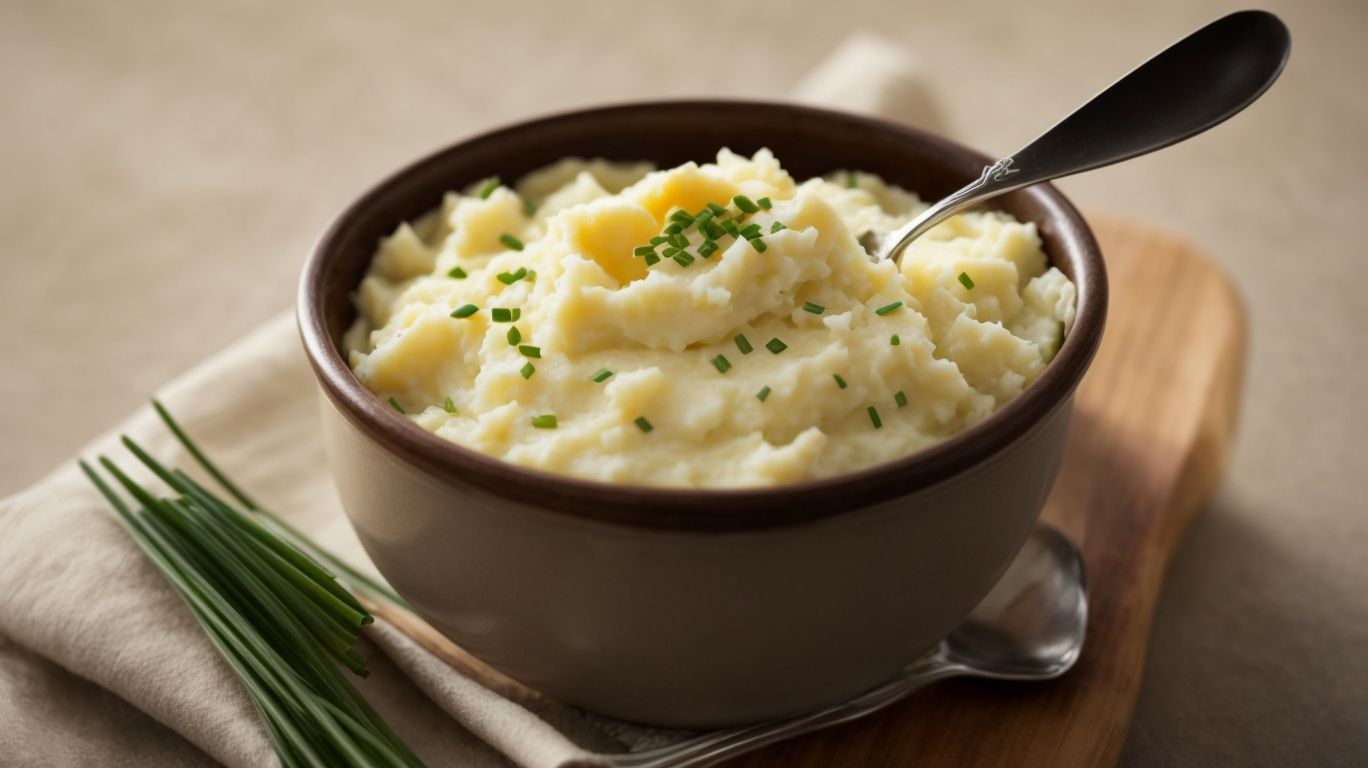
Credits: Poormet.Com – Dylan Jackson
To achieve the perfect mashed potatoes, consider using unsalted butter for better flavor control, maintaining the ideal consistency by slowly incorporating warm milk, and adding a pinch of salt at the end to enhance the overall taste.
Another essential aspect of creating velvety mashed potatoes is selecting the right type of potatoes; starchy varieties like Russets or Yukon Golds work best. Make sure to peel and cut the potatoes into evenly sized chunks for even cooking. Boil the potatoes until they are fork-tender, then drain them thoroughly to avoid excess moisture.
One pro tip is to warm the milk before adding it to prevent a temperature shock that can result in lumpy potatoes. Incorporate the butter first, then slowly add the warmed milk while mashing until you achieve the desired creamy texture.
Frequently Asked Questions
1. How to Cook Mashed Potatoes?
To cook mashed potatoes, start by peeling and chopping your potatoes into uniform chunks. Then, boil them in a pot of salted water until they are fork-tender. Drain the potatoes and return them to the pot. Add in some butter, milk, and any desired seasonings, then use a potato masher to mash the potatoes until they reach your desired consistency.
2. What type of potatoes should I use for mashed potatoes?
Starchy potatoes, such as Russet or Yukon Gold, are the best for making mashed potatoes. They have a higher starch content, which results in a fluffier and smoother texture.
3. Can I make mashed potatoes ahead of time?
Yes, you can make mashed potatoes ahead of time. After cooking and mashing them, transfer them to an airtight container and store them in the fridge for up to 3 days. When ready to serve, simply reheat them in a pot on the stove, stirring occasionally.
4. How can I make my mashed potatoes more flavorful?
To make your mashed potatoes more flavorful, try adding in some roasted garlic, fresh herbs, or grated cheese. You can also mix in some sour cream or cream cheese for a tangy and creamy twist.
5. Can I use a food processor to mash my potatoes?
While you can use a food processor to mash your potatoes, it’s not recommended. Over-mixing the potatoes can result in a gummy and gluey texture. It’s best to use a potato masher or a fork to mash them by hand.
6. How do I prevent my mashed potatoes from getting gluey?
To prevent your mashed potatoes from becoming gluey, make sure not to over-mash them and avoid using a food processor. It’s also important to use starchy potatoes and to not overcook them. Lastly, be careful not to overmix the potatoes once you add in the butter and milk.

